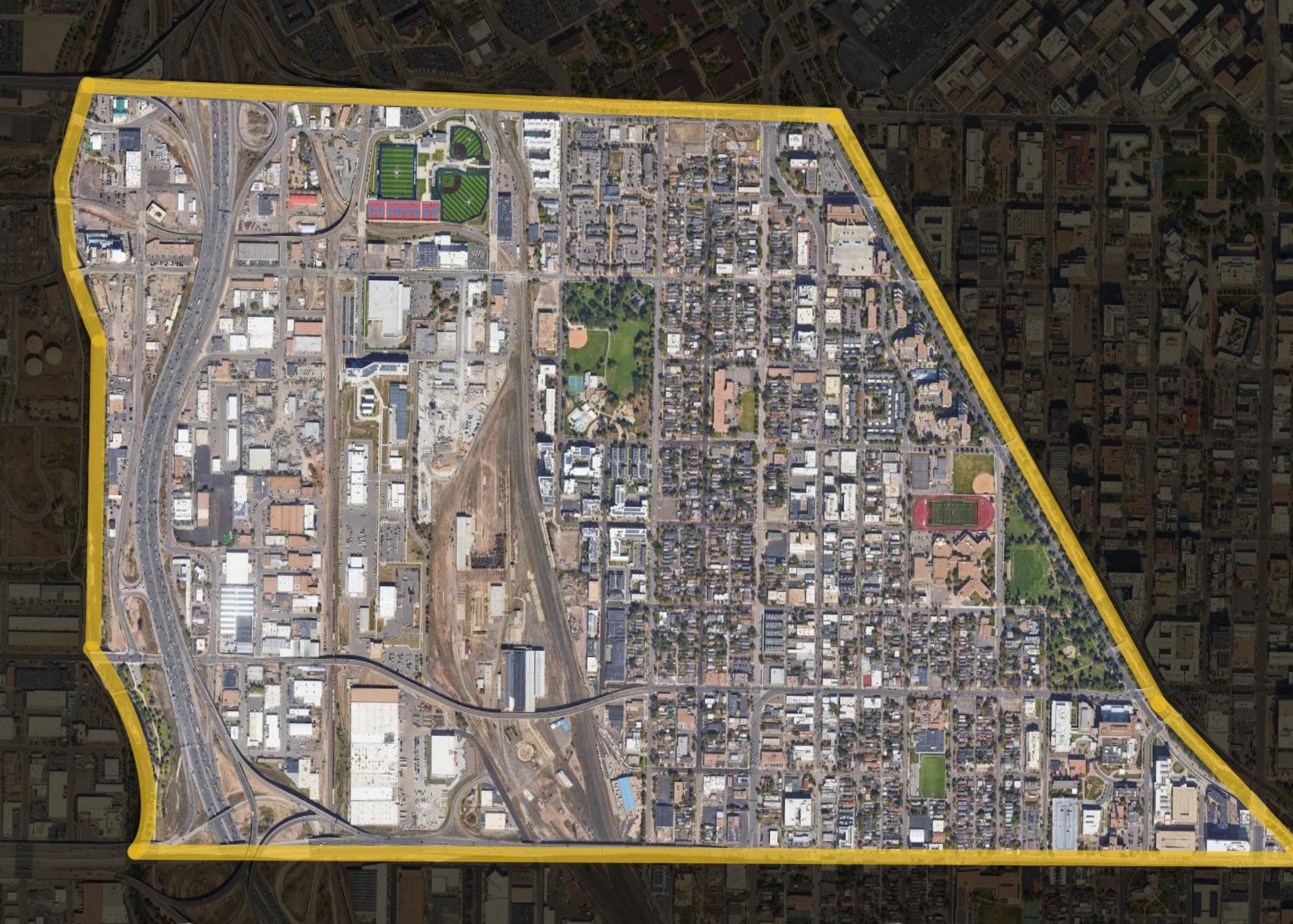
Our Neighborhood
La Alma Lincoln Park is a vibrant, mixed-use, urban community with parks, transit, arts district, cultural facilities, a major grocery store, and proximity to downtown and multiple institutes for higher education, arts, and culture.
History
Here between the Platte & Cherry Creek Rivers, many tribes once camped and hunted freely. Denver once included Cheyenne & Arapahoe reservation land. The new train yard transformed the neighborhood, bringing both industry & community. The cultural & political influence of the Chicano Movement, the condemnation and demolition of the Auraria neighborhood & a swelling Latino population made an indelible mark on this neighborhood. The name “La Alma Lincoln Park” was officially designated in the 1980’s. The 10th & Osage Light Rail Station’s arrival brought new energy to the emerging Art District on Santa Fe. DHA embraced the opportunity to partner with and invest in this community. “Mariposa”- a vibrant mixed-income, multi-use, transit, and pedestrian oriented community was in operation by 2015.
Neighborhood Plan
While signs of gentrification continue, the community’s commitment to maintaining affordable housing options promises to keep La Alma Lincoln Park a unique place to live and thrive. A Neighborhood Plan published by the City of Denver’s Department of Community Planning & Development in 2010 establishes long range goals and objectives for the development and stabilization of the neighborhood surrounding Land Use and Urban Design, Mobility and Infrastructure, Parks and Preservation, Economic Development and Public Health while addressing the Character of the neighborhood. A potential Design Overlay along Santa Fe Drive supports future development in integrating with the existing community by ensuring that it complements the existing build environment and character of place.
La Alma Lincoln Park is one of Denver’s oldest neighborhoods.
93% of residential blocks were half or more developed before 1900. While the remaining 7% were completed by 1914.
Locations are recognized Denver Historic Landmarks.
Locations are on the National Register of Historic Places.
Locations qualify for historic preservation under Chapter 30 of the Denver Revised Code.
In 2021, La Alma Lincoln Park Neighborhood was recognized as a Historic Cultural District by the City of Denver, ensuring that changes to the neighborhood occur thoughtfully and honor its connection to the Chicano Movement. We focus on preserving the character of a neighborhood that people love— homes with history, dwellings that preserve the past, while honoring modern lifestyles and promoting contemporary improvements.
Our Neighborhood is:
TRANSIT-ORIENTED
It is well-served by a variety of transportation options, including a light rail station, bus service, bike routes, and routes for walking. Currently, there is a project in place to widen sidewalks from 6th to 13th Ave, Santa Fe, and the 5280 Trail. This Downtown Denver Partnership envisions linking our neighborhood to others and connect people to the essential Downtown experience.
CULTURED
It is a diverse neighborhood that maintains its Latino cultural identity, is home to the Denver Art District on Santa Fe, Metropolitan State University of Denver’s Center for Visual Art, Colorado Ballet, Su Teatro Theatre, Museo de las Americas, and provides easy access to Denver’s theater district, museum district, and major sports and concert venues.
COMMUNITY-CENTRIC
The neighborhood provides homes, jobs, and services for a wide variety of ages, lifestyles, economic circumstances, ethnic groups, and family types with a variety of housing levels ranging from subsidized housing to middle-level market rate. There is a mix of small-lot single-family units, duplexes, row houses, and low-, mid-, and high-rise apartment buildings. The neighborhood is rapidly growing and enjoying both public and private economic reinvestment.
Neighborhood Boundaries
The La Alma Lincoln Park Neighborhood falls within the following boundaries:
Northern Boundary: Colfax Avenue
Eastern Boundary: Speer Boulevard
Southern Boundary: 6th Avenue
Western Boundary: South Platte River








